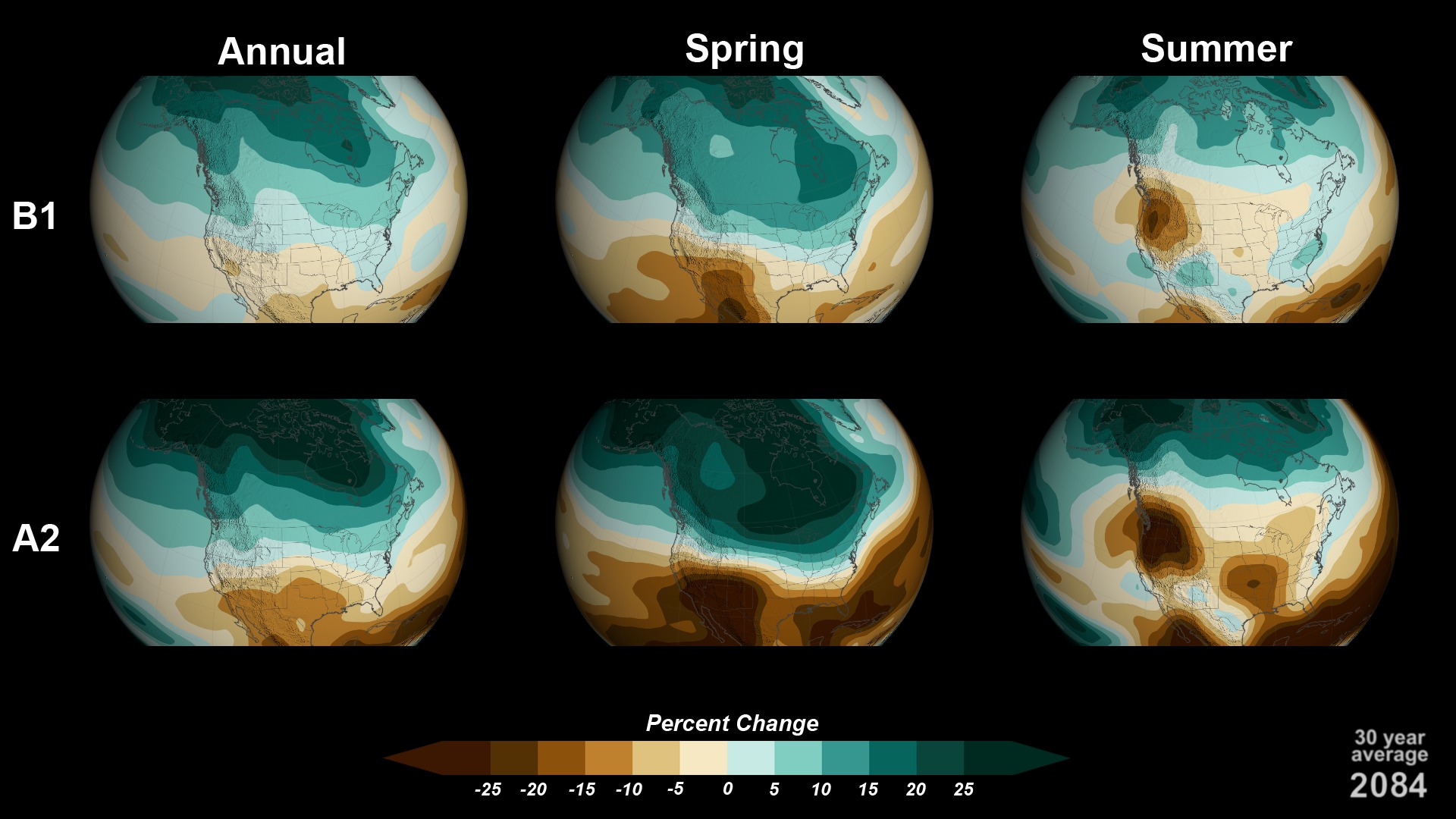Enhancing The Extremes
Climate change is expected to bring about warmer temperatures in most places around the globe. But the situation with rainfall and snow is different. As Earth warms due to rising levels of the greenhouse gas carbon dioxide, scientists expect existing precipitation patterns in many cases to become more extreme. In short, rainy regions will see more rain, and dry regions will become drier. Two climate scenarios—one where global carbon dioxide levels reach 550 parts per million (ppm) by the year 2100, and another where levels rise to 800 ppm—were analyzed to see how such changes could affect different parts of the U.S. The analysis was performed for the National Climate Assessment, a U.S. Global Change Research Program effort to study and help the nation prepare for climate change. Watch the videos to see how precipitation patterns in the U.S. could change under each scenario.

Wet places become wetter and dry places become drier under America’s future climate.
This video shows precipitation changes based on a scenario in which carbon dioxide levels reach about 550 ppm.
This video shows precipitation changes based on a scenario in which carbon dioxide levels reach about 800 ppm.

By 2050, the low-emissions scenario (550 ppm CO2) shows widespread precipitation changes across the continental U.S.

By 2050 in the high-emissions scenario (800 ppm CO2), the Northeast has become wetter and the Southwest has become drier.

By 2100, the low-emissions scenario (550 ppm CO2, left) and high-emissions scenario (800 ppm CO2, right) show dramatic precipitation changes.
Credits
Please give credit for this item to:
NASA's Goddard Space Flight Center
-
Animator
- Greg Shirah (NASA/GSFC)
-
Producer
- Allison Leidner (USRA)
-
Scientists
- Kenneth Kunkel (NOAA/NCDC,CICS-NC)
- Brooke Stewart (NOAA/NCDC,CICS-NC)
- Laura Stevens (NOAA/NCDC, CICS-NC)
- Anne Waple (NOAA)
-
Project support
- Andrew Buddenburg (NOAA/NCDC,CICS-NC)
-
Writer
- Patrick Lynch (Wyle Information Systems)
Release date
This page was originally published on Thursday, July 18, 2013.
This page was last updated on Wednesday, May 3, 2023 at 1:52 PM EDT.
